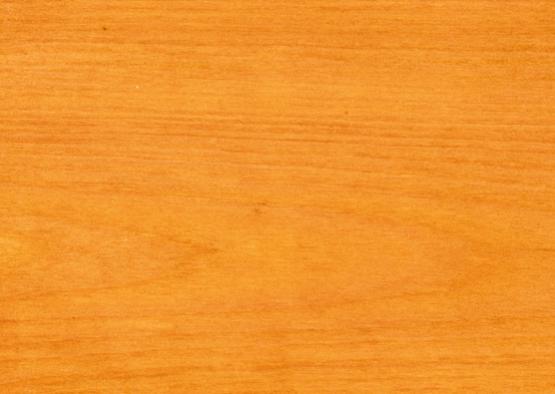The Tasmanian hardwood, leatherwood, produces an extremely even and fine-grained timber in a rich range of hues, with good workability and finish.
Eucryphia billardieri
Eucryphia lucida

Renowned as a honey nectar tree, leatherwood is an understorey tree in the wet Tasmanian rainforests and mixed forests where it accounts for almost 70% of all honey produced. Where there is prolific growth the tree is excluded from timber use to maintain a resource for the apiary industry.
When harvested, however, leatherwood produces an attractive timber in a rich palette ranging from pinks to browns. Purple-heart logs feature the most figured wood and resemble black-heart sassafras. The heartwood is pinkish brown with a fine uniform texture while the sapwood remains undefined.
Leatherwood is an extremely even and fine-grained timber with good workability and finish. Its grain is usually straight with visible but not obvious growth rings. It seasons well with no distortion and glues, nails, bends, and polishes easily, making it popular for furniture making. It can produce a fine burl wood that is rare and highly prized.
Commercially leatherwood timber is used for furniture manufacturing and veneers, as well as pulpwood, turning and handles.
The common name, leatherwood, comes from the extreme flexibility of its green timber.
Shrinkage
| Very Low | Low | Medium | High | Very High | |
|---|---|---|---|---|---|

|
|||||
Tangential : |
9.40%
|
||||
Radial : |
4.90%
|
||||
Unit Movement Tangential: |
|||||
Unit Movement Radial: |
Strength Group

Very High |
High |
Reasonably High |
Medium High |
Medium |
Reasonably Low |
Low |
Very Low |
||
Unseasoned: |
S1 |
S2 |
S3 |
S4 |
S5 |
S6 |
S7 |
S8 |
|
|---|---|---|---|---|---|---|---|---|---|
 |
|||||||||
Seasoned: |
SD1 |
SD2 |
SD3 |
SD4 |
SD5 |
SD6 |
SD7 |
SD8 |
|
 |
Stress Grade

| Structural No. 1 |
Structural No. 2 |
Structural No. 3 |
Structural No. 4 |
Structural No. 5 |
|
Unseasoned: |
F11 |
F8 |
F7 |
F5 |
F4 |
Seasoned: |
F17 |
F14 |
F11 |
F8 |
F7 |
Density per Standard

Seasoned: |
740kg/m3
|
|---|---|
Unseasoned: |
830kg/m3
|
Joint Group

Very High |
High |
Reasonably High |
Medium |
Low |
Very Low |
|
Unseasoned: |
J1 |
J2 |
J3 |
J4 |
J5 |
J6 |
|---|---|---|---|---|---|---|
 |
||||||
Seasoned: |
JD1 |
JD2 |
JD3 |
JD4 |
JD5 |
JD6 |
 |
Colour

| White, yellow, pale straw to light brown | Pink to pink brown | Light to dark red | Brown, chocolate, mottled or streaky | |
 |
||||
Mechanical Properties
Modulus of Rupture - Unseasoned: |
|
|---|---|
Modulus of Rupture - Seasoned: |
|
Modulus of Elasticity - Unseasoned: |
|
Modulus of Elasticity - Seasoned: |
|
Maximum Crushing Strength - Unseasoned:  |
|
Maximum Crushing Strength - Seasoned: |
|
Impact - Unseasoned: |
|
Impact - Seasoned: |
|
Toughness - Unseasoned: |
|
Toughness - Seasoned: |
|
Hardness - Unseasoned: |
|
Hardness - Seasoned: |
Durability
| Low | Moderate | Reasonably High | High | |
| (0 - 5 yrs) | (5 - 15 yrs) | (15 - 25 yrs) | (more than 25 yrs) | |
In-Ground: |
 |
|||
| (0 - 7 yrs) | (7 - 15 yrs) | (15 - 40 yrs) | (More than 40 yrs) | |
Above ground: |
||||
| (0 - 20 yrs, usually < 5) | (21 - 40 yrs) | (41 - 64 yrs) | (More than 60 yrs) | |
Marine Borer Resistance: |
Lyctid Borer Susceptibility: |
Susceptible |
|---|---|
Lyctid Borer Susceptibility - Other: |
|
Termite Resistance: |
Not Resistant
|
Fire Properties
| 1 - non-combustible | 2 - reasonably non-combustible | 3 - slightly combustible | 4 - combustible | |
Fire Properties Group |
Group Number - Other: |
3 if used on MDF or particleboard ≥12mm; veneer thickness 0.6-0.85mm
|
|---|---|
Average Specific Extinction Area: |
<250
|
Bushfire Resistance: |
BAL 12.5 and 19 – Door and window joinery only
|
An attractive, even and fine-grained timber in a rich palette ranging from pinks to browns, leatherwood heartwood is pinkish brown while its sapwood is not clearly defined. Purple-heart logs feature the most figured wood and resemble black-heart sassafras. It can also produce a fine burl wood that is rare and highly prized by furniture makers. The grain is usually straight with visible but not obvious growth rings.
Leatherwood timber can be used for furniture manufacturing and veneers, as well as pulpwood, turning, and handles.
Leatherwood's even, fine grain gives it good workability and finish. It seasons well with no distortion and glues, nails, bends and polishes easily.



